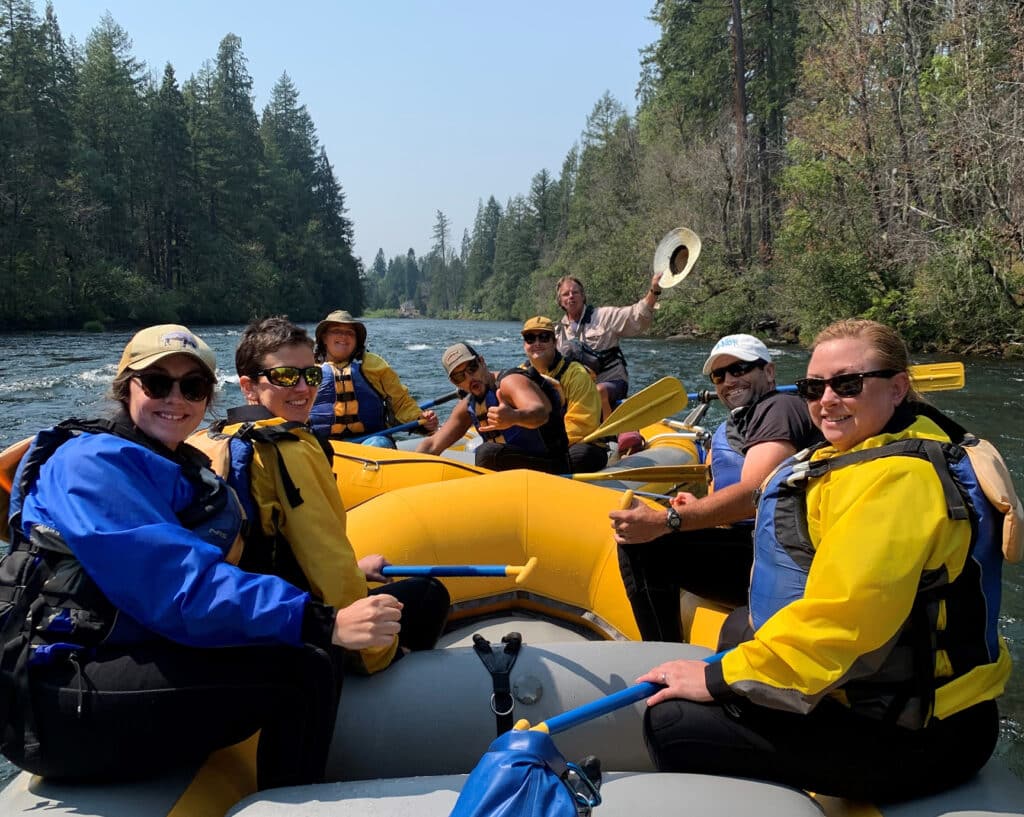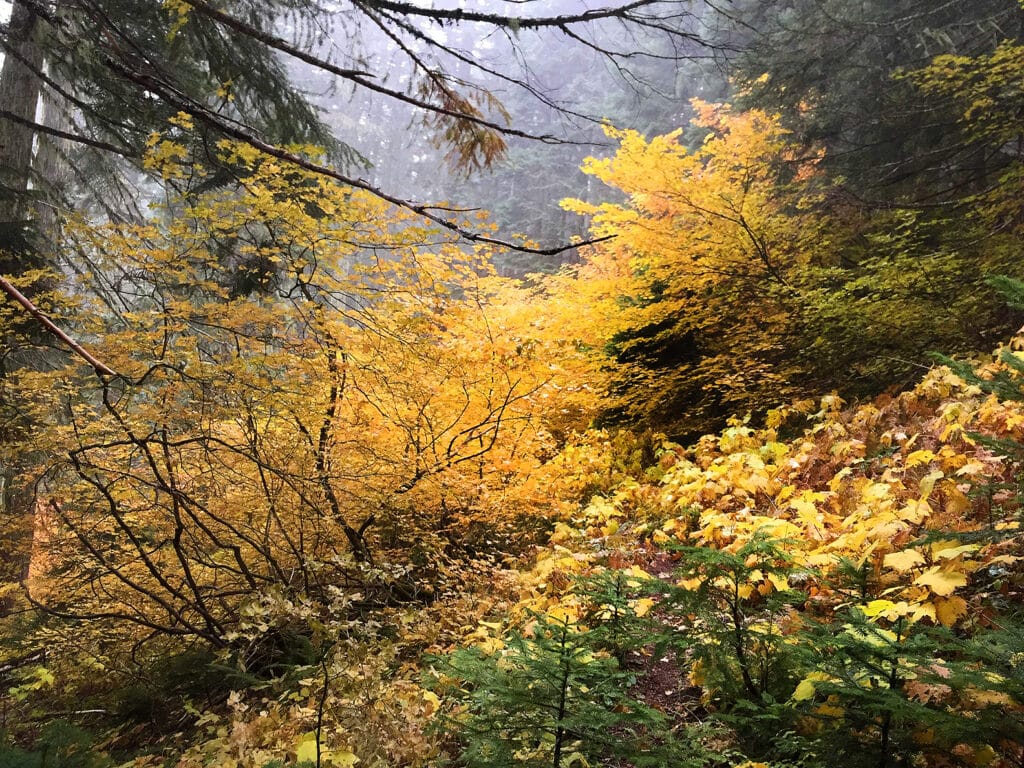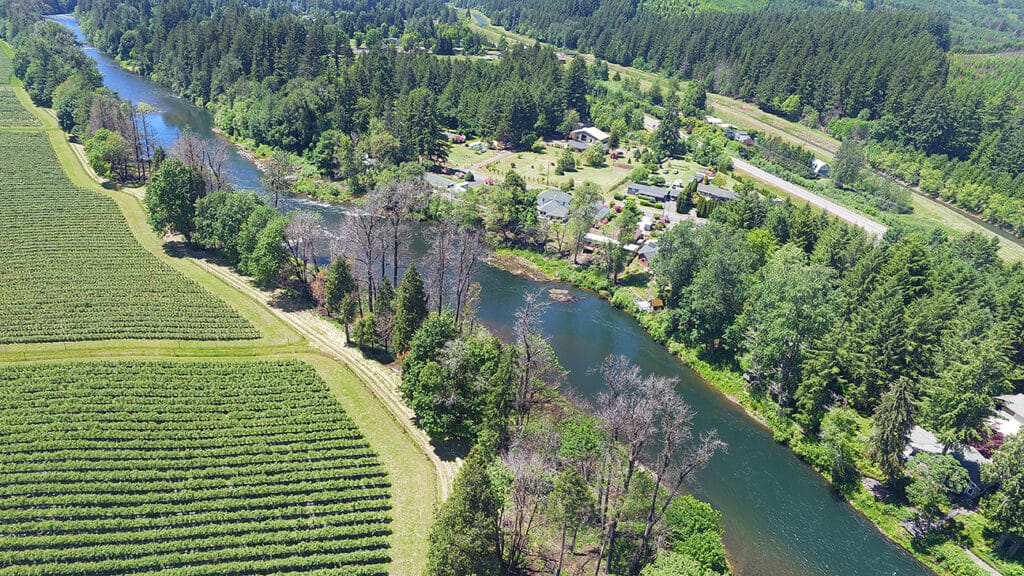Partner Profile: McKenzie Watershed Council
March 14, 2023
Working with trusted partners in watersheds across the West is invaluable to fulfilling TFT’s mission to preserve and protect freshwater ecosystems. We recently chatted with Jennifer Weber, a restoration program manager at the McKenzie Watershed Council in Springfield, Oregon. Her organization has a unique, voluntary approach to ensuring the health of the McKenzie River watershed.
Can you share in a few words what your organization does?
Since 1993, the McKenzie Watershed Council (MWC) has worked in partnership with federal, state and local governments, local utilities, businesses and community members to protect and restore water quality and habitat in Oregon’s McKenzie basin. We accomplish this through a voluntary approach to a range of projects to restore habitat, protect water quality, and engage the public.

McKenzie Watershed Council staff on float trip down the McKenzie River. Photo courtesy of McKenzie Watershed Council.
What is the most unique aspect of your organization?
We are a consensus-based organization. We have 28 official Council “Partners” who come from a wide spectrum of interests, from federal land managers to timber and aggregate industries to local area residents. Each brings a unique perspective and set of values to the table and through education and discussion the Council comes to consensus on goals and objectives for our work to protect and enhance the McKenzie subbasin.
Getting to consensus on a wide variety of issues and initiatives takes time and effort, but ultimately makes us a stronger organization.
How did you get into this profession?
I have always had an interest in aquatic habitats. As a kid, I frequently played in the creek in the woods behind my house. There were lots of tadpoles and frogs that were my besties. As an adult, I attended the University of Oregon, where I received my degree in landscape architecture. During college, I developed a deep love of landscape-scale ecological restoration. After graduation, my former advisor, Dave Hulse, shared with me that the MWC was hiring, and so I applied. That was more than 10 years ago.

Vine maple. Photo courtesy of Daniel Baldwin.
What is your favorite native plant and why?
Vine maples! I love the way that they change their growth habit to seek sunlight when growing in the understory or more upright in full sun. Their delicate branching pattern coupled with small palmate leaves provides interesting texture. In the fall, they give a wonderful golden glow to our western Cascade understories.
Why do native plants matter in the Upper Willamette Valley?
Native plants have evolved over a long period of time within our unique eco-region. These native plants are well-adapted to wet, moderate winters and dry summers. Our native fauna has also evolved with them and rely on them for habitat and forage. Native plants have fewer pests, and a decreased need for additional interventions like irrigation once established.
How did your organization first start working with The Freshwater Trust?
The MWC first partnered with TFT in 2008 on a riparian revegetation project along the Mohawk River. This project was a “proof of concept” for early ecosystem services calculations by TFT, USDA Natural Resources Conservation Service, Oregon Department of Environmental Quality and other partners. After that, both TFT and MWC became members of the Pure Water Partners program (originally Voluntary Incentive Program). Through that partnership, we began to implement pilot shade credit projects in the McKenzie basin, starting with two in the Cedar Creek subwatershed and followed by two along the mainstem of the McKenzie River.

Riparian project planted in early 2021 in area along McKenzie River burned by the Holiday Farm Fire in fall 2020. New trees are replacing the fire-killed tree canopy (center foreground). Riparian forests are the last barrier before sediment, excess nutrients, and pollutants enter this drinking water source.
What’s your favorite project that you’ve worked on with TFT and why?
My favorite project is a shade credit project at river mile 32 on the McKenzie River. The property was significantly impacted by the Holiday Farm Fire, leaving a stretch of the southern riverbank fully exposed to the sun. This area was replanted in 2021, and revegetating an area visible from the river that was damaged by wildfire gives hope to the community.
I’m looking forward to the expansion of TFT’s shade credit work into other basins within the Upper Willamette—there’s a lot of opportunity for riparian restoration and shade credit work is a great way to fund that.
Tell me about a few goals of your organization for the next years.
We are heavily involved in the recovery efforts following the Holiday Farm Fire in 2020. Our participating landowners’ property is assessed for erosion control, forest fuels, and revegetation needs or concerns. At the end of our planting season this year, we will have planted more than one million plants on nearly 300 acres across more than 250 properties. This work is supported by ongoing plant maintenance activities, erosion control treatments, and forest fuel reduction work on private and non-federal lands impacted by wildfire.
In addition to this work, the MWC, along with our local project partners, the U.S. Forest Service, Bureau of Land Management, McKenzie River Trust and Eugene Water and Electric Board, plan to implement an ambitious 10-year plan for instream restoration in the “middle” McKenzie to restore valley-bottom connection across more than 1,000 acres.
Why do you like working with TFT?
I enjoy working with TFT because they help to bring solution-focused projects to fruition through innovative funding, like shade credits.
As a project partner, they’re great to work with and always bring a great can-do attitude to the work, which is especially important on challenging sites.
#McKenzie River #native plants #riparian restoration
